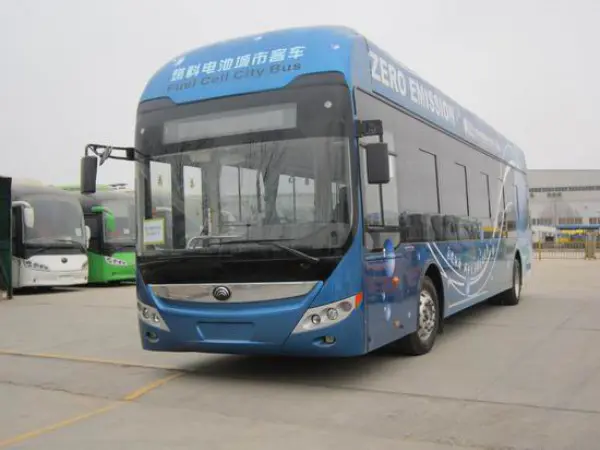A new hydrogen fuel cell bus was unveiled in Central Chinese City of Wuhan on Thursday, December 28, 2017.
The 8.5-meter vehicle can carry 56 passengers and can run more than 450 kilometers on single refuel of hydrogen, which takes three to five minutes, said its developer, Wuhan Tiger Fuel Cell Vehicle Co. Ltd.
The vehicle is able to start at temperatures as low as minus 20 degrees Celsius and intelligently detect malfunctions, according to the company.
The company signed an agreement on Thursday with Wuhan Skywell, a new energy vehicle manufacturer, to produce 3,000 such buses in the next two years.
The first batch is expected to hit the road in Wuhan, capital of Hubei Province, in the second quarter of 2018.
Wuhan Industrial Technology Research Institute of Geo-resources and Environment and the Hubei branch of China National Petroleum Corporation would set up a hydrogen station in Wuhan in 2018, and bring the number in the province to 21 within three years.
A Hydrogen-powered bus also known as fuel cell bus is a bus that uses a hydrogen fuel cell as its power source for electrically driven wheels, sometimes augmented in a hybrid fashion with batteries or a supercapacitor.
The only emission from the bus is water. Several cities around the world have trialled and tested fuel cell buses, with over 5,600 buses in use worldwide, the majority of which are in China.
Buses powered by hydrogen fuel cells have some similarities with battery electric buses, as well as key differences.
Both types are zero-emission at the tailpipe, with hydrogen fuel cell buses producing water. However many sources of hydrogen, including those most commonly used, are not zero-emission.
Both are propelled by electric motors, and both have been produced by a range of bus manufacturers. Both have upfront costs – such as electric chargers, or a hydrogen fuelling station.

